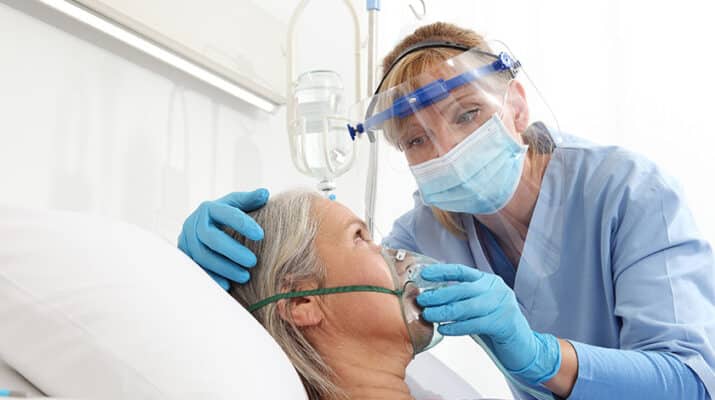By Deborah Jeanne Sergeant
A licensed respiratory therapist can make an annual mean wage of $65,770
With only an associate degree, a licensed respiratory therapist can make an annual mean wage of $70,040 in the Buffalo area. The career is ranked at sixth in the US News & World Reports’ Top Health Care Jobs. The US Department of Labor states that by 2029, they expect a 19%-plus increase in demand for respiratory therapists.
These professionals take care of patients of all ages who have breathing difficulties. This can include assessing, treating and supervising respiratory therapy technicians in inpatient and outpatient settings.
Stephen G. Smith, respiratory therapist and past chairman and extended member of the New York State Education Department Respiratory Therapy Licensure Board, said that 74% of respiratory therapists work in hospitals. That is because it is not covered by Medicare or health insurance, making it a costly service for doctor’s offices to provide. Large healthcare systems can more easily absorb the expense.
“One of our concerns is that they need to work in in-patient and outpatient settings,” he said.
He is working to require a bachelor’s degree for the profession. However, that can only help respiratory therapists gain employment because it will open the way for health insurance companies to cover their services. Medicare requires a bachelor’s degree as a minimum for this type of provider to be covered and typically, health insurers follow Medicare’s lead on what’s covered.
“What would happen is those practicing now would be grandfathered in,” Smith said. “Once the bill became law, those in school, whether associate degree or bachelor’s, would require a Bachelor of Science degree in respiratory therapy to practice.”
Then, the person needs to pass a licensure exam to practice.
The role has room to grow with positions in supervision and management, positions in academia for those willing to achieve the necessary experience and, as needed, further education. In addition to these roles, Smith has also operated his own durable medical equipment business that specialized in chronic pediatric cardiopulmonary cases.
“You have to be strong in math and the sciences,” Smith said. “You have to have good interpersonal skills and be able to talk with people and educate people with cardiopulmonary diseases and their families. That’s a big responsibility.”
Connie Zimicki, respiratory therapist, continued her education, eventually earning a master’s degree in education. She serves as director of clinical education at SUNY Erie Community College.
“It’s been a hugely rewarding field for me,” Zimicki said. “I’ve never been unemployed. You can work per diem. It’s always been a fluid, flexible field with huge opportunities for employment and satisfaction.”
She believes that a good candidate for the school’s respiratory therapist program should have the right personal traits such as empathy, the ability to think on one’s feet, flexible and ability to work as part of a team.
Zimicki said that the pay scale can be low in some institutions compared with the level of responsibility. She hopes that increasing the educational requirements will lead to healthcare providers’ ability to receive reimbursement for respiratory therapists’ services.
“We’re seen as an expense to many CFOs and doctors, unlike physician assistants, nurse practitioners and nurses,” Zimicki said. “It limits opportunities. We can’t work in an urgent care facility. We’re not a revenue stream.”
Despite this drawback, she feels that working in respiratory therapy feels fulfilling.
“A lot of our therapies and practices have either immediate or short-term relief,” she said. “Everyone knows what it feels like to not be able to breathe, so it’s so rewarding to help someone take that

